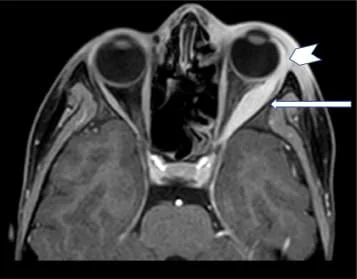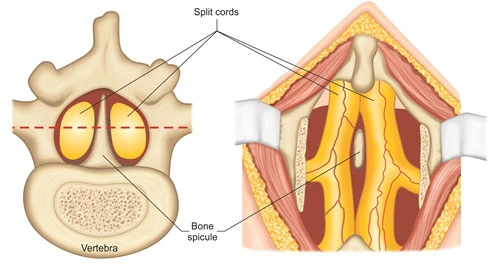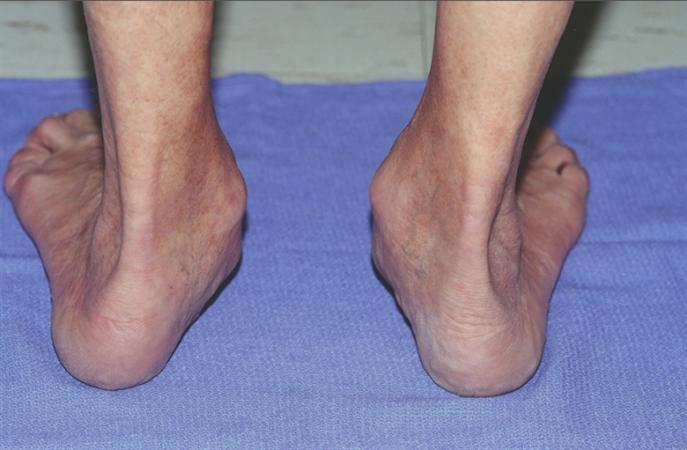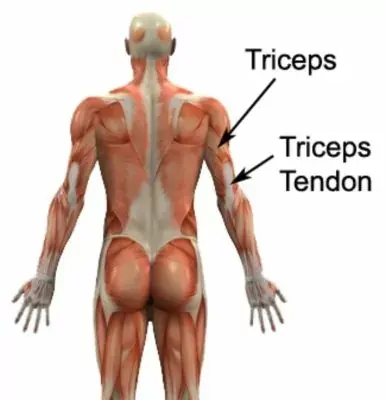Lateral Rectus Myositis
What is Lateral Rectus Myositis?
“Lateral Rectus Myositis” typically refers to inflammation of the lateral rectus muscle in the eye. The eye is moved outward and away from the nose by the lateral rectus muscle. Myositis means inflammation of the muscles.
In the context of the eye, myositis can affect any of the extraocular muscles, including the lateral rectus. Inflammation of these muscles can lead to various symptoms, such as pain, redness, and difficulty moving the eye. Myositis can be caused by various factors, including infections, autoimmune diseases, and other inflammatory conditions.
One specific condition related to inflammation of the eye muscles is “orbital myositis.” Orbital myositis involves inflammation of the muscles within the eye socket (orbit), and it can affect any of the eye muscles, including the lateral rectus. It often presents with pain, swelling, and limitation of eye movements.
If you or someone you know is experiencing symptoms related to eye muscle inflammation, it’s crucial to consult with an ophthalmologist or a healthcare professional for a proper diagnosis and appropriate treatment. They may conduct a thorough examination, order imaging studies, and perform other tests to determine the cause of the symptoms and develop an appropriate management plan.
Causes of Lateral Rectus Myositis
Lateral rectus myositis, or inflammation of the lateral rectus muscle in the eye, can have various causes. Some potential causes include:
- Infections: Viral or bacterial infections can lead to inflammation of the eye muscles. For example, conditions like viral conjunctivitis or orbital cellulitis may cause myositis.
- Autoimmune Diseases: Some autoimmune conditions, such as thyroid eye disease (Graves’ disease), can involve inflammation of the eye muscles. In these cases, the body’s immune system mistakenly attacks the muscles.
- Inflammatory Disorders: Conditions like sarcoidosis or systemic lupus erythematosus (SLE) are examples of inflammatory disorders that can affect the eye muscles.
- Idiopathic Orbital Inflammatory Syndrome (IOIS): This is a condition where inflammation occurs in the eye socket without an apparent cause. It is also called orbital pseudotumor.
- Trauma: Direct trauma to the eye or surrounding structures can lead to inflammation of the eye muscles.
- Vascular Disorders: Conditions affecting blood vessels, such as giant cell arteritis, may cause inflammation in the eye muscles.
- Inflammatory Medications: Rarely, certain medications or drugs may induce inflammation in the eye muscles as a side effect.
It’s important to note that the specific cause of lateral rectus myositis can vary from person to person.
Symptoms of Lateral Rectus Myositis
The symptoms of lateral rectus myositis, or inflammation of the lateral rectus muscle in the eye, can vary depending on the underlying cause and the severity of the inflammation. Common symptoms may include:
- Eye Pain: Individuals with lateral rectus myositis may experience pain in or around the affected eye. The pain can be worsened by eye movement.
- Redness: The eye may appear red or bloodshot due to the inflammation of the muscle.
- Swelling: Swelling around the eye, especially in the area of the lateral rectus muscle, can occur.
- Difficulty Moving the Eye: Inflammation can restrict the movement of the affected eye, particularly in the outward (lateral) direction, as the lateral rectus muscle is responsible for moving the eye away from the nose.
- Double Vision (Diplopia): Inflammation affecting the lateral rectus muscle can disrupt the proper alignment of the eyes, leading to double vision.
- Tearing: Excessive tearing or increased sensitivity to light (photophobia) may occur.
- Vision Changes: In some cases, there may be changes in vision, although this is not as common.
It’s important to seek prompt medical attention if you experience these symptoms, as they can be indicative of various eye conditions, including lateral rectus myositis.
Diagnosis
Diagnosing lateral rectus myositis involves a comprehensive evaluation by an eye care professional, typically an ophthalmologist.
The diagnosis procedure is:
- Medical History: The doctor will review your medical history, including any recent illnesses, infections, or other relevant events.
- Physical Examination: A thorough eye examination will be conducted to assess the external and internal structures of the eye. The doctor will check for redness, swelling, and any abnormalities in eye movement.
- Eye Movement Assessment: The ophthalmologist will assess the range of motion of your eyes, paying particular attention to the lateral rectus muscle and its ability to move the eye away from the nose.
- Visual Acuity Testing: Standard eye charts may be used to assess your visual acuity and identify any changes in vision.
- Blood Tests: In some cases, blood tests may be ordered to check for signs of inflammation or autoimmune conditions that could be causing the myositis.
- Imaging Studies: Imaging techniques such as magnetic resonance imaging (MRI) or computed tomography (CT) scans may be used to obtain detailed images of the eye and surrounding structures. This can help identify any swelling or inflammation in the lateral rectus muscle or other eye muscles.
- Biopsy (rarely): In certain cases, a biopsy of the affected tissue may be performed to determine the cause of inflammation.
The specific diagnostic approach will depend on the individual’s symptoms, medical history, and the findings during the examination. Once a diagnosis is established, the healthcare provider can develop an appropriate treatment plan based on the underlying cause of the lateral rectus myositis.
Treatment of Lateral Rectus Myositis
The treatment of lateral rectus myositis, or inflammation of the lateral rectus muscle in the eye, depends on the underlying cause and the severity of the condition.
The few most common treatment options are:
- Anti-Inflammatory Medications: In many cases, the primary treatment involves the use of anti-inflammatory medications. Nonsteroidal anti-inflammatory drugs (NSAIDs) or corticosteroids may be prescribed to alleviate symptoms.
- Pain Management: If there is significant pain associated with lateral rectus myositis, pain management medications may be recommended.
- Treatment of Underlying Conditions: If the myositis is secondary to an underlying condition, such as an infection or autoimmune disease, treating the root cause is crucial. This may involve antibiotics for infections or immunosuppressive medications for autoimmune conditions.
- Cool Compresses: Applying cool compresses to the affected eye can help reduce swelling and provide some relief.
- Rest and Avoidance of Eye Strain: Resting the affected eye and avoiding activities that strain the eye muscles, such as prolonged reading or staring at a computer screen, may be beneficial during the recovery period.
- Follow-up Examinations: Regular follow-up appointments with an eye care professional are essential to monitor progress and make any necessary adjustments to the treatment plan.
It’s crucial to consult with an ophthalmologist or an eye specialist for an accurate diagnosis and appropriate treatment. Self-diagnosis and self-medication are not recommended, as the underlying cause of myositis needs to be addressed for effective and safe management.
If the condition is severe or not responding to initial treatments, more advanced interventions, such as surgical procedures or intravenous medications, may be considered. The specific course of treatment will be tailored to the individual’s condition and the findings of the healthcare provider during the diagnostic process.
How to Prevent Lateral Rectus Myositis?
Preventing lateral rectus myositis, or inflammation of the lateral rectus muscle in the eye, may not be entirely possible in all cases, especially when the condition is secondary to infections or autoimmune diseases. However, there are general eye health practices that can contribute to overall well-being and may help reduce the risk of certain eye issues. Here are some tips:
- Maintain Good Hygiene: Maintain proper hygiene to lower your chance of illness. Wash your hands regularly, especially before touching your face, eyes, or contact lenses.
- Protect Your Eyes: Use appropriate eye protection in situations where there is a risk of injury or trauma to the eyes. This is particularly important in activities such as sports or work environments where eye injuries are more likely.
- Avoid Eye Strain: Take breaks during prolonged periods of reading, computer use, or other activities that require intense focus.
- Follow the 20-20-20 rule: To lessen eye strain, look at anything 20 feet away for at least 20 seconds every 20 minutes.
- Stay Hydrated: Proper hydration is essential for overall health, including the health of your eyes. Ensure you are drinking enough water throughout the day.
- Manage Underlying Health Conditions: If you have underlying health conditions such as autoimmune diseases or thyroid disorders, work closely with your healthcare provider to manage these conditions effectively. Regular check-ups and adherence to prescribed treatments can help prevent complications.
- Regular Eye Exams: Make an appointment for routine eye exams with a qualified eye care specialist. Routine eye exams can detect potential issues early, allowing for prompt intervention and reducing the risk of complications.
- Follow Medical Advice: If you have a known eye condition or are prescribed medications for other health issues, follow your healthcare provider’s advice and attend regular check-ups.
While these measures can contribute to eye health, it’s essential to recognize that some causes of lateral rectus myositis may be beyond direct prevention.
Conclusion
Lateral rectus myositis involves inflammation of the eye’s lateral rectus muscle, causing symptoms like pain, redness, and difficulty moving the eye. Diagnosis requires a comprehensive eye exam, and treatment depends on the underlying cause, often involving anti-inflammatory medications.
While prevention may not be entirely possible, maintaining good eye hygiene, protection, and regular check-ups can contribute to overall eye health. Timely medical care is essential for a precise diagnosis and suitable therapy.







